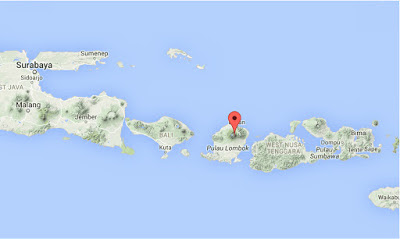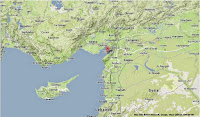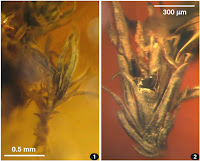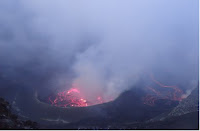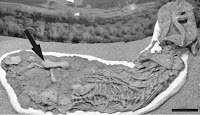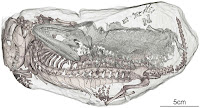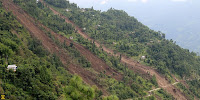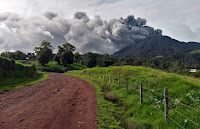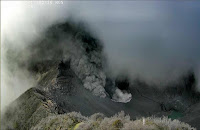Lichens
are hybrid symbiotic organisms, with a 'body' comprised of Fungal
hyphae within which can be found cells of an Algal symbiont, and (it
has recently been discovered) a third, Bacterial component that
somehow facilitates the symbiosis between the other two partners.
This unique symbiosis enables lichens to survive in a wide variety of
habitats found inhospitable by other organisms, including hot and
cold deserts, mountaintops and the high tidal zone on exposed rocky
shores, as well as man-made surfaces such as brick and concrete.
In a
paper published in the journal MycoKeys on 13 May 2016, Einar Timdal
of the Natural History Museum of the University of Oslo, WalterObermayer of the Institut für Pflanzenwissenschaften at
Karl-Franzens-Universität Graz, and Mika Bendiksby of the UniversityMuseum at the Norwegian University of Science and Technology,
describe a new species of Lichen from the High Himalayas of Nepal and
Tibet.
The new
species is placed in the genus Psora, which contains about 30
species found on rock and soil from arid areas from the Arctic to the
subtropics, and given the specific name altotibetica,
from 'altitude' and 'Tibet'. The species was first identified from a
preserved specimen at the Herbarium of the Institut für
Pflanzenwissenschaften at Karl-Franzens-Universität Graz, collected
by Austrian lichenologist Josef Poelt (1924-1995) in 1962 from near the Khumbu Glacier in Nepal, south
of Mt Everest, then again in some specimens collected by Torstein Engelskjøn of the Tromsø Museum from the Rongbuk Valley in Tibet, north
of Mt Everest, during a joint Chinese-Norwegian scientific expedition
in 1993, and subsequently in a number of other specimens collected at
altitudes between 4230 and 5000 m in Tibet and stored in the
Herbarium of the Institut für Pflanzenwissenschaften.
Psora
altotibetica, known
distribution. Open circle = holotype locality. Timdal et
al. (2016).
Psora altotibetica is a white
or off-white encrusting Lichen with black apothacia (cup-shaped fruiting-body that produces spores). It's
upper tissues were found to contain crystals of gyrophoric acid and
calcium oxalate. A genetic analysis suggests it is closely related to
Psora tenuifolia,
another Tibetan species, which has been recorded at altitudes of
between 2610 and 4525 m.
Psora
altotibetica growing on rock. Scale bar is 1 mm. Timdal et
al. (2016).
See also...
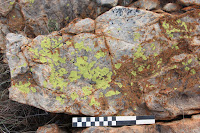 Evidence of Lichen growth on the bones of Homo naledi. In 2013 scientists in South Africa described the discovery of a
remarkable new Hominin species in the Dinaledi Cave System in Gauteng
State, South Africa (part of the Maropeng Cradle of Humankind...
Evidence of Lichen growth on the bones of Homo naledi. In 2013 scientists in South Africa described the discovery of a
remarkable new Hominin species in the Dinaledi Cave System in Gauteng
State, South Africa (part of the Maropeng Cradle of Humankind... A new species of Lichen-infecting parasitic Fungus from Scandinavia. Lichens are symbiotic organisms, each consisting of a Fungus and an
Alga, the Fungus obtaining nutrients from the substrate (surface upon which the
Lichen sits), while the Alga produces carbohydrates through photosynthesis.
They the Fungi and Algae involved...
A new species of Lichen-infecting parasitic Fungus from Scandinavia. Lichens are symbiotic organisms, each consisting of a Fungus and an
Alga, the Fungus obtaining nutrients from the substrate (surface upon which the
Lichen sits), while the Alga produces carbohydrates through photosynthesis.
They the Fungi and Algae involved...
Follow Sciency Thoughts on Facebook.




